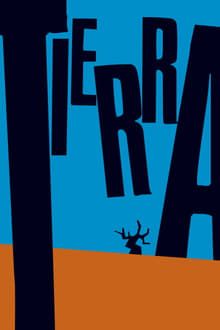
A mysterious exterminator falls in love with two women who live in a distinctive wine-producing region in Spain.
You May Also Like

Upon reaching the train station to death, a dejected soul is informed that he is lucky and will have another chance at life. He is placed in the body of a 14-year-old boy named Kobayashi Makoto, who has just committed suicide. Watched over by a neutral spirit named Purapura, the soul must figure out what his greatest sin and mistake in his former life was, before his time limit in Makoto’s body runs out. He also has a number of other lesser duties he must complete, such as understanding what led Makoto to commit suicide in the first place and learning how to enjoy his second chance at life.

A man rescues a woman from a suicide attempt in a gay nightclub. Walking the streets together, she propositions him: She’ll pay him to visit her at her isolated house for four consecutive nights. There he will silently watch her. He’s reluctant, but agrees. As the four nights progress, they become more intimate with each other, and a mutual fascination/revulsion develops. By the end of the four-day “contract”, these two total strangers will have had a profound impact on each other.

Kuhle Wampe takes place in early-1930s Berlin. The film begins with a montage of newspaper headlines describing steadily-rising unemployment figures. This is followed by scenes of a young man looking for work in the city and the family discussing the unpaid back rent. The young man, brother of the protagonist Anni, removes his wristwatch and throws himself from a window out of despair. Shortly thereafter his family is evicted from their apartment. Now homeless, the family moves into a garden colony of sorts with the name “Kuhle Wampe.”

During the Civil War, at a Southern girls’ boarding school, young women take in an injured enemy soldier. As they provide refuge and tend to his wounds, the house is taken over with sexual tension and dangerous rivalries, and taboos are broken in an unexpected turn of events.

Frankie McGuire, one of the IRA’s deadliest assassins, draws an American family into the crossfire of terrorism. But when he is sent to the U.S. to buy weapons, Frankie is housed with the family of Tom O’Meara, a New York cop who knows nothing about Frankie’s real identity. Their surprising friendship, and Tom’s growing suspicions, forces Frankie to choose between the promise of peace or a lifetime of murder.

It is 300 years into the future. Earth’s environment had been devastated by mankind’s own foolish plans and humankind is beleaguered by the sentient forests which they have awoken. The world balance is tipped when a young boy named Agito stumbles across a machine that glowed in a strange blue hue inside a forbidden sanctuary.

The apparent vertical scratch in celluloid that opens Presents literally opens into a film within the film. When its figure awakens into a woman in a ‘real’ unreal set, the slapstick satire of structural film begins. It is not the camera that moves, but the whole set, in this first of three material ‘investigations’ of camera movement. In the second, the camera literally invades the set; a plexiglass sheet in front of the dolly crushes everything in its sight as it zooms through space. Finally, this monster of formalism pushes through the wall of the set and the film cuts to a series of rapidly edited shots as the camera zigzags over lines of force and moving fields of vision in an approximation of the eye in nature. Snow pushes us into acceptance of present moments of vision, but the single drum beat that coincides with each edit in this elegaic section announces each moment of life’s irreversible disappearance.

Third Man on the Mountain is an American film directed by Ken Annakin and produced by Walt Disney Productions, released in 1959. It is adapted from a novel by James Ramsey Ullman, entitled “Banner In The Sky”. In the middle of the 19th century in Switzerland, a famous British mountaineer, Captain John Winter, wanted to climb a difficult summit, the Citadel. He goes to a small village but no guide wants to accompany him. A young man from the village, Rudi Matt, whose father died fifteen years earlier during an attempt to climb the Citadel, is determined to accompany him, with the help of his uncle. Winter also manages to hire a guide from a neighboring village and competitor, Emil Saxo. The roped party of four men then begins the ascent of the still untouched summit.

A young spirited woman, Zelma, is determined to conform to the pressures of singing Mythology Sirens in order to be loved, but more she conforms, the more her body resists. A story of inner female rebellion.